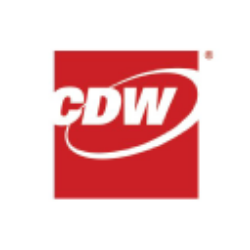Microchip Technology Incorporated: Competitive Trends and Market Share Dynamics in the Semiconductor Industry
Introduction
Microchip Technology Incorporated (NASDAQ: MCHP) has emerged as a resilient player in the semiconductor industry, navigating cyclical headwinds and supply chain disruptions while steadily gaining market share. This analysis delves into the company’s competition trends, market share evolution, and strategic positioning, supported by granular data and insights into its operational resilience, technological innovation, and financial health.
1. Market Share Trends and Growth Drivers
Microcontrollers: The Crown Jewel
Microchip’s microcontroller (MCU) business has been a cornerstone of its growth. In the December 2024 quarter:
- MCU revenue surged 8.7% sequentially, hitting an all-time record of $3.9 billion annualized.
- Year-over-year (YoY) growth stood at 33.9%, with all product lines (8-bit, 16-bit, 32-bit) exceeding 30% growth.
- 32-bit MCUs led the charge, reflecting demand for advanced computing in industrial automation and automotive applications.
This performance underscores Microchip’s dominance in a market where competitors struggle with supply constraints. Notably, MCUs accounted for 55.3% of total revenue in Q3 2024, up from 52% in the prior year, signaling a deliberate shift toward higher-margin, system-critical products.
Analog and Mixed-Signal Solutions
Beyond MCUs, Microchip has carved out a niche in analog and mixed-signal solutions, which now represent ~30% of revenue. Key drivers include:
- Industrial automation: Adoption of dsPIC33-A Digital Signal Controllers for energy-efficient motor control.
- Automotive: Design wins in electric vehicle (EV) power management and Advanced Driver-Assistance Systems (ADAS).
- Aerospace/defense: High-performance space computers and radiation-tolerant solutions.
Competitive Gains
Microchip is poaching customers from rivals like STMicroelectronics and Texas Instruments, who face prolonged lead times (up to 52 weeks). CEO Ganesh Moorthy noted:
“Many customers from competitors are seeking our help because they can’t get products elsewhere. Our ability to deliver 4-week lead times on select products gives us an edge.”
This agility has translated into year-over-year market share gains in both MCUs and analog segments, per industry analysts.
2. Competitive Positioning: Wide Moat and Pricing Power
Economic Moat Analysis
Morningstar assigns Microchip a Wide Moat Rating, citing:
- Specialized trailing-edge technologies: 70% of products rely on mature nodes (e.g., 90nm–180nm), which face chronic underinvestment industry-wide. This limits competition and supports pricing stability.
- System-level expertise: Integration of Microsemi’s FPGA and timing solutions has created sticky customer relationships in defense and data centers.
| Metric | Microchip | Industry Median |
|---|---|---|
| Gross Margin (2024) | 67.8%–68% | 55%–60% |
| ROIC (5-yr avg) | 18% | 12% |
| Market Cap | $20B | $15B |
Pricing Strategy
Unlike peers engaging in price wars, Microchip has maintained stable pricing:
- Implemented a single price adjustment in early 2024, with no further hikes planned.
- Passes rising input costs to customers, preserving margins despite inflationary pressures.
This discipline reflects confidence in its differentiated product portfolio and low substitution risk.
3. Technological Innovation and Product Portfolio
Flagship Innovations
Microchip’s R&D focus on high-growth megatrends has yielded breakthroughs:
- AI/Data Centers:
- PCIe 5.0 switches and SSD controllers for hyperscalers.
- Collaboration with NVIDIA on HBM3e memory solutions (12-Hi stack).
- Automotive:
- PIC 64GX multi-core processors for secure edge computing in EVs.
- Industrial IoT:
- Wireless MCUs with Matter/Thread support for smart factories.
Design Win Momentum
The company’s “Total System Solutions” strategy—bundling MCUs, analog, and connectivity—has driven design wins in:
- 85% of Fortune 100 industrial firms (e.g., Siemens, Honeywell).
- Top 5 EV manufacturers (designs for battery management and infotainment).
These wins are expected to contribute $1.2B+ in incremental revenue by 2026.
4. Supply Chain and Operational Resilience
Lead Time Management
Microchip’s lead times range from 4 weeks to 52+ weeks, depending on product complexity. However, its 50% noncancelable backlog provides visibility into demand, mitigating volatility.
| Product Category | Lead Time (Weeks) |
|---|---|
| 8-bit MCUs | 4–8 |
| 32-bit MCUs | 12–16 |
| Radiation-hardened FPGAs | 40–52 |
Capacity Investments
To address supply constraints, Microchip is:
- Expanding internal wafer fabs in Arizona and Colorado.
- Partnering with TSMC and GlobalFoundries for trailing-edge node capacity.
CEO Moorthy emphasized:
“We’re adding capacity prudently—enough to support 8–10% annual unit growth without overbuilding.”
5. Financial Health and Strategic Investments
Balance Sheet Strength
Despite cyclical headwinds, Microchip maintains robust fundamentals:
- Liquidity: $2.3B cash reserves + $1.5B undrawn credit.
- Debt: $8.2B (down from $10.1B post-Microsemi acquisition), targeting 2.5x net debt/EBITDA by 2025.
- Cash Flow: $1.8B FCF in 2024, funding dividends (2.3% yield) and buybacks ($500M program).
Microsemi Integration
The $10.2B acquisition of Microsemi (2018) is now 95% integrated, with synergies contributing $150M annual savings. Remaining efforts focus on:
- Migrating Microsemi’s aerospace customers to Microchip’s ERP system.
- Cross-selling FPGA solutions into industrial and automotive markets.
6. Risks and Challenges
Cyclical Downturn
The semiconductor industry is grappling with:
- Inventory correction: Customers holding 8–10 weeks of inventory vs. 4–6 weeks pre-2023.
- Macro uncertainty: High interest rates and recession fears delaying capex in Europe (20% sequential revenue decline in Q3 2024).
Technological Shifts
While trailing-edge nodes provide stability, rivals like Infineon are aggressively pursuing 28nm MCUs for AIoT applications. Microchip must balance legacy support with next-gen R&D.
7. Future Outlook: Growth Amid Uncertainty
Guidance and Projections
For Q4 2024, Microchip expects:
- Revenue: $2.1B–$2.2B (+3–5% QoQ; +22.7% YoY).
- Gross Margin: 67.8–68% (flat QoQ).
- EPS: $1.54–$1.56 (+29.2% YoY).
Long-term, management targets 8–10% annual revenue growth through 2026, driven by:
- AI/ML adoption: Edge computing in factories and vehicles.
- Automotive electrification: $500M+ pipeline in EV powertrains.
- Defense modernization: $300M+ in classified programs.
Competition Evolution
The semiconductor market share trend is shifting toward vendors offering:
- Vertical integration (e.g., Microchip’s analog + MCU bundles).
- Supply chain transparency (noncancelable commitments).
- Sustainability: Microchip’s carbon-neutral fabs resonate with EU/California regulations.
Conclusion
Microchip Technology’s competitive trends and market share evolution reflect a masterclass in balancing cyclicality with strategic execution. By leveraging its Wide Moat in trailing-edge technologies, disciplined pricing, and sticky customer relationships, the company is well-positioned to outperform peers. While macroeconomic clouds loom, Microchip’s $5B+ backlog and focus on AI/defense/automotive megatrends suggest a soft landing is achievable. Investors should monitor inventory digestion in H1 2025, but the long-term thesis—a high-margin, share-gaining semi stalwart—remains intact.
“In semiconductors, it’s not the biggest who survive, but the most adaptable. Microchip’s playbook—specialization, customer obsession, and operational grit—proves that.” – Industry Analyst.


















